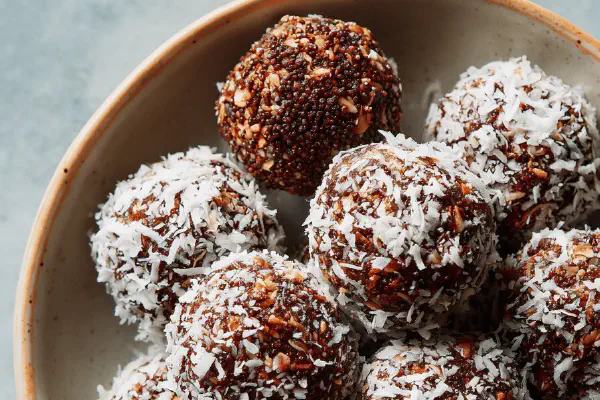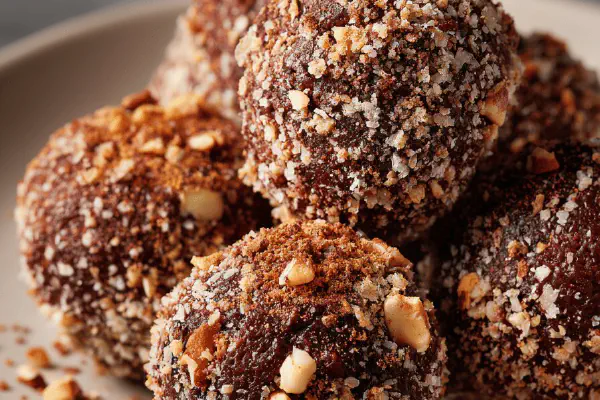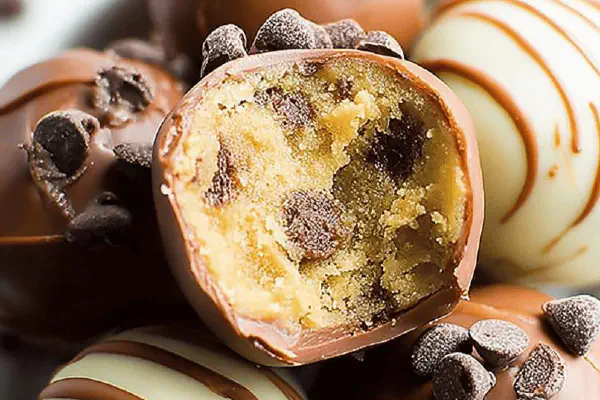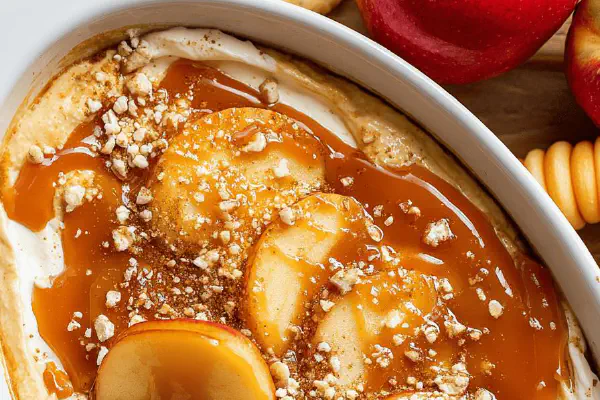No-Cook Eggless Choco Dough
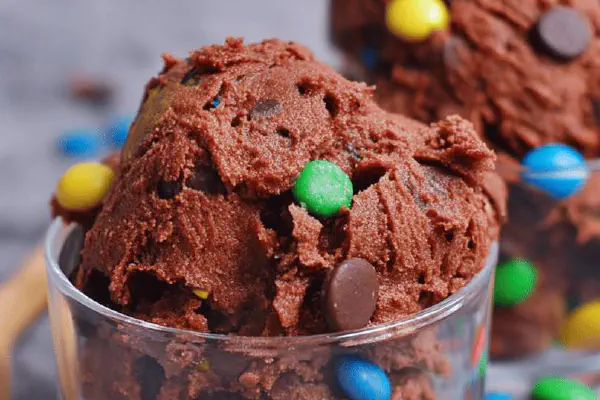
By Emma
Certified Culinary Professional
Ingredients
- 2 tablespoons granulated sugar
- 1 tablespoon packed light brown sugar
- 3 tablespoons unsalted butter softened, room temp
- 3 tablespoons all-purpose flour (substitute cornstarch for safer raw eating)
- 2 tablespoons mini chocolate chips (or chopped dark chocolate)
- 1 teaspoon water, add extra if dough feels too thick
- 1/2 teaspoon pure vanilla extract
- Pinch fine sea salt
- Optional twist 1/8 teaspoon ground cinnamon for warm depth
About the ingredients
Method
- Mix sugars and softened butter in a small bowl. Use a spatula to mash and blend until mixture loosens, grainy but pliable. Butter warmth important here for creaminess without melting.
- Add vanilla extract, pinch salt, water. Stir through. Watch dough start to come together but not slick or runny.
- Fold in flour or cornstarch gradually, feel dough’s texture. Should hold shape, not crumbly or sticky. More flour tames too loose dough; water rescues dry crumbly bits.
- Sprinkle in chocolate chips. Toss lightly so chips don’t all sink to bottom or clump.
- Pause, press dough against bowl sides. It should compress not crumble apart. If too dry, a few drops more water. Too wet? A shake of flour.
- Ready to eat immediately; cold tiny chunks of butter slowly melt in mouth. Aroma sharp—brown sugar, vanilla, soft butter harmonize. The subtle salt cuts sweetness—don’t skip.
- Store covered in fridge if not gobbled down immediately. Dough firms when chilled; soften a bit at room temp before scooping again.
- Experiment adding a touch of instant espresso powder or chili flakes for grown-up palates. Useful backup when out of eggs but craving cookie dough hit.
Cooking tips
Chef's notes
- 💡 Butter softness is key. Room temp, not melted. Break into chunks, spread on plate, mash with spatula. Over-melting ruins creaminess, chips sink, dough becomes oily. Grainy sugar blends better into softened fat. Brown sugar not just sweetness, adds chew and moisture. Granulated sugar alone dries crumbly. Add water slow, drops at a time, watch for dough hold but no runniness. Flour or cornstarch gradually, fold gently. Too much flour? Gummy, pasty. Too little? Crumbly, dry. Use fingers to test dough, press lightly for shape hold.
- 💡 Mix sugars and butter first until grainy and pliable, not smooth—looks like sandy paste. Has to loosen without melting. Vanilla and salt next. Don’t skip salt; pulls together flavor and cuts candy sweetness. Add water now. Stir once till dough just binds. Flour last, fold so no clumps. Chocolate chips at end, toss lightly. Keeps chips from sinking or clumping at bottom. Don’t mix too long or chips melt and dough toughens. Timing and texture walk a thin line; fingers know best.
- 💡 If dough sticks too much, rest 10 minutes. Flour hydrates and firms slightly without extra mixing. No chilling needed, but if texture weird or oily, fridge 15–20 minutes helps firm. Butter cold again? Let soften before next scoop. Toast flour dry in pan 2 minutes to remove raw flavor—cool completely before mixing. For crunch, add nuts or crushed cookies final fold. Substitute almond/cashew butter halfway for softer mouthfeel and nuttiness. Switch brown sugar for honey or maple syrup but cut flour down slightly to balance moisture.
- 💡 Use mini chocolate chips for even bursts of chocolate. Larger chunks tend to sink or clump. Water amount varies; watch the dough texture closely. Too wet? More flour slowly. Too dry? More water in tiny drops. Vanilla extract is non-negotiable—without it dough dulls and flat. Salt pinch critical for flavor balance. Spice twist like cinnamon or instant espresso powder adds dimension but dose lightly. Add-ins go last. Butter temp might wreck dough if overheated during mixing; cool down if needed before folding chips.
- 💡 If dough feels oily or greasy, try half butter, half coconut oil and refrigerate before eating. Oily dough affects chip distribution and mouthfeel. Leftovers in airtight container fridge max 3 days. Color and aroma fade fast, texture firms. Freezing not great; wrap tight, thaw about 20 minutes room temp before eating. Hands dusted with flour helps sticky dough but too much flour dries crumbly. Check dough edges and bottom for fully incorporated flour; incomplete mixing means crumbly dough. Press dough gently to check readiness—compressible but holds shape.
Common questions
How to fix crumbly dough?
Add tiny drops of water, stir gently. Dough that falls apart means too dry. Avoid dumping all water at once; too fast loosens dough. Monitor texture: slightly sticky but shape-holding. If still crumbly, check if flour fully incorporated, sometimes lumps hide dry spots.
Can I use different sugar types?
Brown sugar needed for chew and moisture. Granulated sugar alone will dry out dough crisp and crumbly. Honey or maple syrup possible but adjust flour down slightly to balance wetness. Powdered sugar variants tried but lead to different textures. Sugars impact moisture and mouthfeel drastically.
How long store dough safely?
Keep covered, fridge max 3 days recommended. Dough firms chilled—soften at room temp before scooping again. Freezing dough not great; changes texture, melts butter unevenly. If frozen, wrap tight, thaw about 20 minutes. Avoid room temp beyond few hours—soft butter turns dough oily, chips melt.
What if butter is too cold or melted?
Too cold butter lumps and won’t blend well; dough tough and uneven. Melted butter makes dough oily, chips sink, texture breaks down. Ideal softness is room temp butter—soft, still solid chunks. Speed softening by cutting butter into small bits, spread on plate, mash with spatula gently. No microwave or liquid butter.
